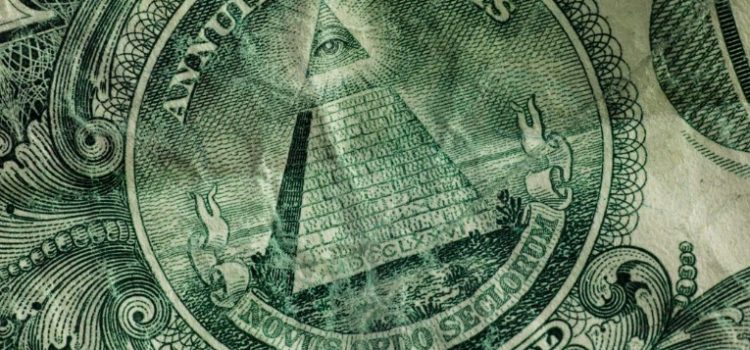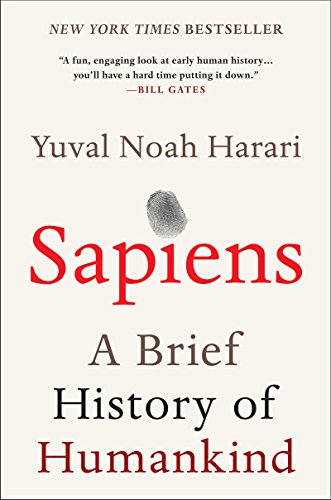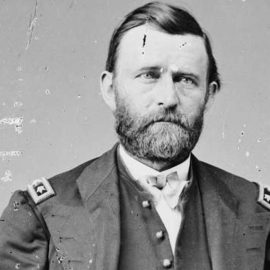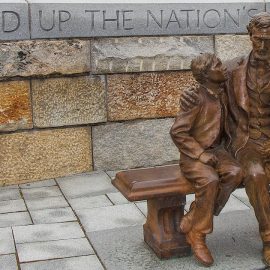

This article is an excerpt from the Shortform summary of "Sapiens: A Brief History of Humankind" by Yuval Noah Harari. Shortform has the world's best summaries of books you should be reading.
Like this article? Sign up for a free trial here .
What is the history of capitalism? How did it originate? How is it tied to science and imperialism? What are some of its problems?
We’ll cover the history of capitalism, from the invention of credit to the codependency of science and capitalism.
The History of Capitalism
To understand our modern economy and the origin of capitalism, you really only need to know one thing: it’s growing.
The Idea of Growth
This seems obvious to us, but for most of history, the economy remained static. Growth is a relatively recent phenomenon, and its incline has been steep: In 1500, global production was about $250 billion. Today, it’s around $60 trillion.
Example: The Banker, the Baker, and the Contractor
To understand this enormous growth and the roots of capitalism, let’s look at a hypothetical example:
Mr. Greedy is a banker. Mr. Stone, a contractor, finishes a job and puts his payment, $1 million, in Mr. Greedy’s bank. Now the bank has $1 million in capital.
Meanwhile, Mrs. McDoughnut wants to start a bakery in town, but she doesn’t have the money to buy a property for her business or buy the tools needed for her business. So she goes to Mr. Greedy at the bank to get a loan. Mr. Greedy loans her $1 million.
Mrs. McDoughnut needs a contractor to build her bakery, so she hires Mr. Stone for $1 million. She pays him and Mr. Stone puts this money into his bank account.
Mr. Stone now has $2 million in the bank. But only $1 million is actually located in the bank’s safe. For every dollar banks actually have, they’re allowed to loan $10, meaning that 90% of the money we keep in banks is not physically at the bank. If everyone suddenly wanted to withdraw money at the same time, this would cause problems.
Our Modern Economy
Why isn’t this fraud? Again, our imagined realities and shared trust in these imagined realities allow this to work. We hold a shared belief that the future will be good, and this good future includes growth. We trust that Mrs. McDoughnut’s business will be a success and that the bank will remain solvent.
This optimism about progress in the future is what drives our economic system and without it, there’d be no growth. This is an important piece of the history and origin of capitalism. Until relatively recently, this trust in the future didn’t exist, and this limited the growth of the economy.
Indeed, in the past, money could convert almost anything into almost anything else, but those things had to exist. For instance, money couldn’t represent the resources Mrs. McDoughnut hoped to have in the future, once the bakery started making a profit. In an economy without trust in the future, banks wouldn’t loan Mrs. McDoughnut money. The only way she could build her bakery would be to find a contractor willing to wait to be paid until after the bakery was built and making a profit. As this wouldn’t be likely, Mrs. McDoughnut wouldn’t establish her bakery. If many people faced this problem of resources, the economy would remain stagnant.
Trust in the Future and the Invention of Credit
The modern agreement to represent future (and therefore imaginary) resources with money today is called credit. Credit plays an important role in the history of capitalism. Credit is founded on the assumption that the future will have more abundant resources than the present.
Loans existed in the pre-modern era, but not commonly for strangers and not on a large scale. This was because people didn’t trust the future to produce more resources than the present. They believed that the economy couldn’t grow because resources were limited. Because resources were limited, and money could only represent things that actually existed, wealth was limited. In other words, there was only so much money to go around. If one baker was prospering, that meant the baker down the street had to be starving. A set amount of wealth meant that if you had it, it was because you were taking it away from someone else.
With this mindset, extending credit was risky. It was not at all a sure thing that the person you lent money to would prosper and be able to pay you back.
The Idea of Progress
The Scientific Revolution brought the idea of progress. If we admit our ignorance, we can take steps to eradicate our ignorance, and this leads to progress. This mindset extended to the economy as well. For instance, new trade routes opened and flourished without damaging the business of the old trade routes. The bakery specializing in cakes didn’t ruin the neighboring bakery specializing in bread. This is a foundation of the history of capitalism.
Trust in the future allowed for the widespread use of credit. Credit allowed the economy to grow. This growth gave people hope in the future and they extended more credit, continuing the cycle of growth.
The New Ethics of Capitalism
Before the notion of progress, people believed that being wealthy was sinful. This was a Christian idea based on the assumption that there was a fixed amount of wealth and resources to be had.
Now, people started to see their wealth as independent of others’ poverty. Further, not only was individual wealth not a sin, it was a societal good. Leading this new morality of money was Adam Smith. In The Wealth of Nations, Smith contended that an employer’s profits benefit society because the employer reinvests his profits in hiring more employees. By hiring more employees, the employer more widely spreads the business’s profits. In a sense, greed is good for everyone.
People started thinking of money-making as a public good. If you’re poor, then you can’t buy your neighbor’s goods, which hurts both of you. If your neighbor is poor, then she can’t buy your goods, which, again, hurts both of you. If just one of you is poor, you both lose. Of course, if both of you are rich, you both win.
This also brought about an ethic about how profits should be used. In the past, rulers and the wealthy had spent their wealth on tournaments, palaces, banquets, wars, and charities. Now, they were expected to reinvest their profits in production, which would increase profits, which could then be reinvested, continuing the cycle.
This reinvested money is called capital. Capital is the term for money and resources that are invested in the production of a product or service. Money buried in a treasure chest in the sand isn’t capital—it’s not put to work. But income invested in the stock market is capital—it’s being put to work. This is how the “religion” of capitalism gets its name. These new ideas about the positive nature of wealth were one of the most enduring legacies of the history of capitalism.
Capitalism brought with it an additional code of ethics, building on the ethics of individual wealth. It declared that economic growth was the “supreme good” because you couldn’t have a just and free society without it. For instance, a capitalist might say that because a stable government depends on a thriving middle class, you can bring political freedom to Zimbabwe by teaching tribesmen about thrift and free enterprise.
The Codependency of Science and Capitalism
The history of capitalism has changed the goals of science. Capitalism asks, “How will this research help my company increase production and profits?” If science can’t answer that, it doesn’t get funding.
But science has also affected capitalism. In many ways, the founding assumptions of capitalism don’t make sense. Why do we think that our resources will be more abundant tomorrow than they are today? A pack of wolves doesn’t look at a herd of sheep and think it will keep getting growing, day after day, even as they keep eating.
In order to make our sunny predictions about the future true, science needs to keep churning out discoveries and technology, such as the discovery of America or the internal combustion engine, that increase our resources or productivity. Until science comes up with a new gadget or discovery, governments often generate bills and coins out of thin air, in the hopes that science will discover something big before the bubble bursts.
Science and the economy depend on each other to stay afloat.
The Codependency of European Imperialism and Capitalism
Imperialism has also played a huge role in the history of capitalism. Columbus’s voyage was a turning point in the history of how we view our own ignorance. This set off the Scientific Revolution. The voyage was also a turning point in how humans viewed credit. Columbus’s voyage was immensely successful. His discoveries allowed Spain to conquer America and establish gold and silver mines and tobacco plantations. This success made it easier for other explorers to get their trips financed by governments and big businesses. Everyone wanted to make money off the next big discovery, so governments had to trust explorers.
This trust paid off. Explorers used credit to travel and make new discoveries. These discoveries resulted in the colonization of new lands. These colonies provided new sources of wealth. These profits increased the trust of governments in explorers. And the governments handed out more credit.
One reason Europe took over the world while Asian empires and dynasties watched passively was that Asian emperors despised merchants and kept their distance from them. Instead of doing business with merchants, Asian rulers implemented higher taxes to generate more money. In contrast, European kings and generals adopted the perspective of the merchants. They knew that while no one wanted to pay taxes, everyone was happy to invest in the empire’s conquests in the hopes of making their fortunes.
The system was mostly successful, but not all ships came back with new wealth and discoveries, and many didn’t come back at all. Limited liability joint-stock companies provided the solution. They allowed an investor to risk only a small amount of money by pooling the money of a group. The payoffs for the individual were often huge.
When Capitalism Fails
During the history of capitalism, Capitalists have had reason to champion the system. It’s spurred economic, scientific, and imperial growth the way few other imagined realities have. But what happens in situations when it fails to work? Let’s look at two critiques of capitalism.
1. The Free-Market Doctrine Makes Us Vulnerable
Most capitalists believe that the government shouldn’t be involved in monitoring or controlling the market (although it’s fine for the market to wield control over the government). This is the idea of a free-market, an important one in the history of capitalism.
The problem is that, as we’ve seen, the most important ingredient of a functioning capitalist economy is trust. This trust is eroded when people cheat and steal, and a free market offers no protection against these dangers. It’s the job of governments to protect people from these dangers and enforce the law. The government has to be involved in the market to keep us safe.
2. Reinvesting Profits Doesn’t Always Benefit Employees
Capitalism is built on Adam Smith’s assumption that employers will reinvest their profits and hire more employees. There are reasons to doubt this assumption. This is a problem in the history of capitalism.
Monopolies
Capitalists say that if an employer doesn’t reinvest his or her profits and instead makes a profit by lowering wages and increasing work hours, the best employees will leave and find a new employer. This is the safeguard of capitalism, they say.
But in a monopoly, it gets harder for an employee to find a job somewhere else. This allows employees to take advantage of workers, and workers can do little about it.
Taking monopolies, slavery, and other types of exploitation into account, there’s no way for free-market capitalism to make sure that wealth is distributed fairly or earned justly. Capitalism doesn’t ensure equality.
———End of Preview———

Like what you just read? Read the rest of the world's best summary of "Sapiens" at Shortform . Learn the book's critical concepts in 20 minutes or less .
Here's what you'll find in our full Sapiens summary :
- How Sapiens outlived and outlasted the 8+ other human-like species on Earth
- The 3 critical revolutions in human existence that led to our domination of the planet
- How much of what powers our world today is really just a shared mass delusion
- What the future of humanity might look like






